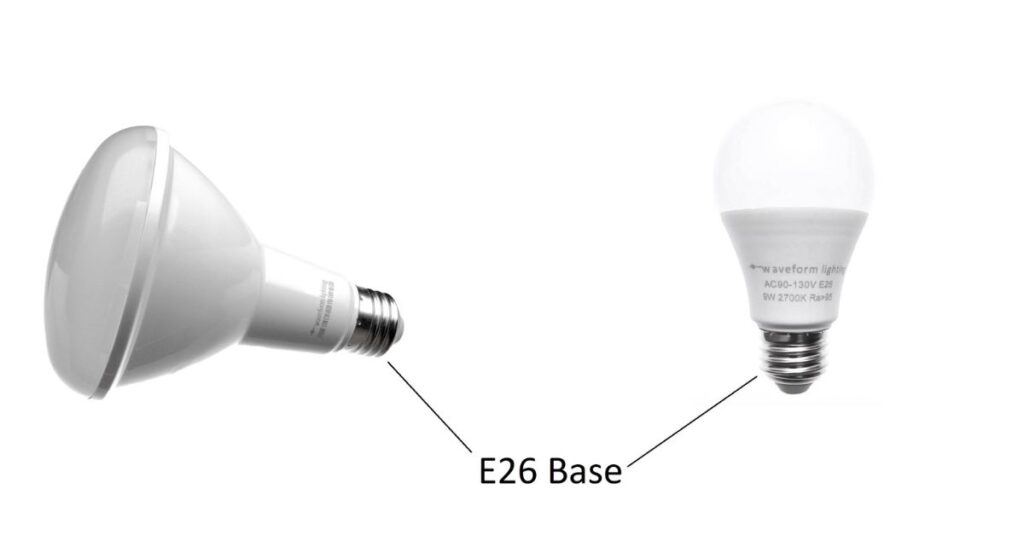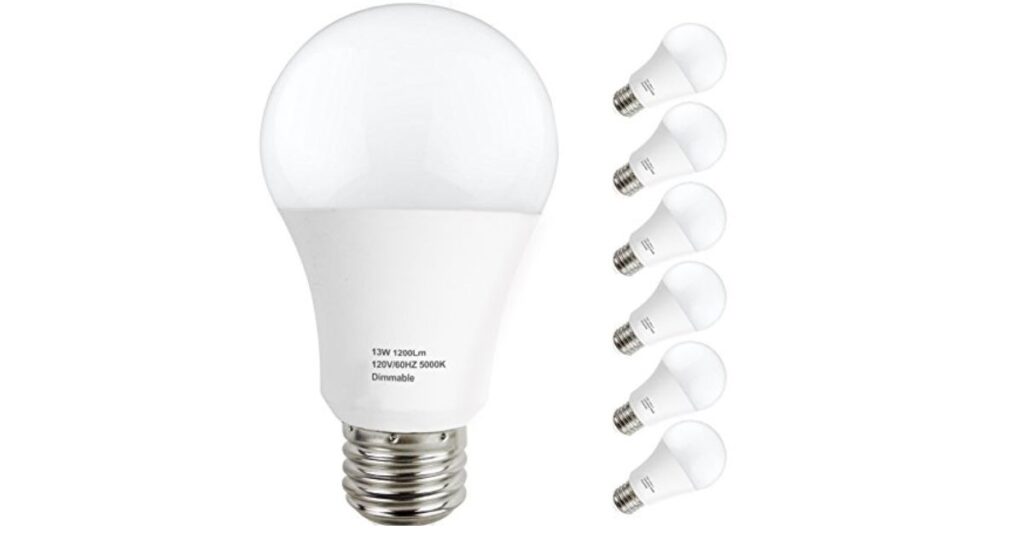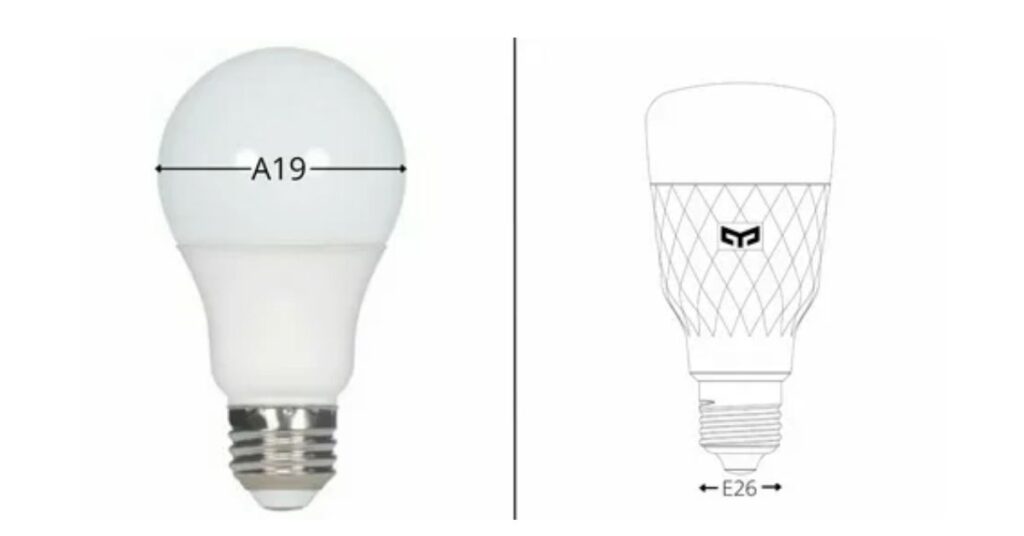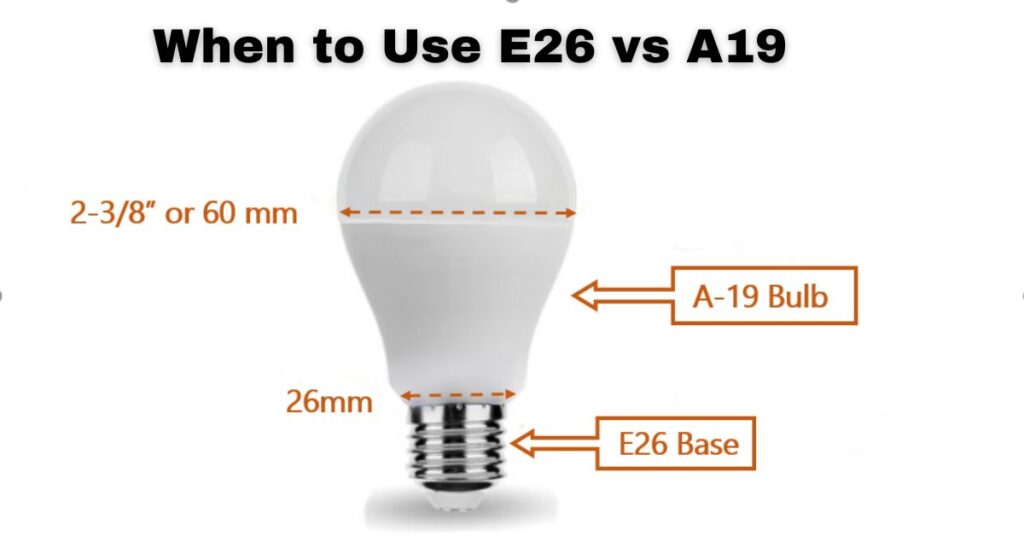When it comes to light bulbs, terminology can be confusing. E26 and A19 are two terms that often spark confusion. At first glance, they might seem interchangeable, but they actually refer to different aspects of a light bulb’s specifications.
Misunderstanding these terms could lead you to purchase the wrong bulb, wasting time and money. Our article will illuminate the key differences between E26 and A19, helping you navigate the world of light bulbs with confidence and ease.
We’ll break down what E26 and A19 really mean, explore their similarities and differences, and provide knowledge for informed decisions. Whether you’re a homeowner, lighting enthusiast, or simply want to understand what you’re buying, this guide will clarify these often misunderstood terms.
What is E26?

E26 refers to a specific type of light bulb base, not the bulb shape. The “E” stands for Edison screw, while “26” indicates the diameter of the base in millimeters. This standardized base is widely used in North America for household light fixtures.
E26 bases are compatible with many bulb shapes and types, including incandescent, CFL, and LED bulbs. When shopping for light bulbs, it’s crucial to match the base type to your fixture for proper fit and function, regardless of the bulb’s shape or light output.
Common uses of E26
E26 bases are widely used in residential and commercial lighting applications. Common uses include:
- Table lamps and floor lamps
- Ceiling fixtures and pendant lights
- Wall sconces and vanity lights
- Outdoor lighting fixtures
- Recessed can lights
- Track lighting systems
- Portable work lights and shop lights
- Some decorative specialty fixtures
What is A19?

A19 refers to a specific shape and size of light bulb, not its base type. The “A” denotes the classic pear-shaped bulb, while “19” indicates its diameter is 19/8 inches (about 2.375 inches) at its widest point.
This bulb shape is incredibly common in household lighting, fitting a wide range of fixtures. A19 bulbs can come with various base types, including the popular E26, and are available in different technologies such as incandescent, CFL, and LED.
Common uses of A19
A19 bulbs are popular due to their standard shape and size, making them suitable for a wide range of lighting applications:
- Table lamps and floor lamps
- Ceiling fixtures and pendant lights
- Wall sconces and vanity lighting
- Outdoor porch and patio lights
- Recessed can lighting
- Track lighting systems
- General purpose lighting in various rooms
Comparing E26 and A19

| A19 | E26 |
|---|---|
| Refers to bulb shape | Refers to base type |
| 19/8 inches (2.375″) diameter bulb | 26mm diameter base |
| Overall bulb shape | Bottom (screw-in part) |
| Standard worldwide | Standard in North America |
| Can have various base types | Works with various bulb shapes |
| Determines light distribution | Ensures proper socket fit |
| Chosen based on fixture and lighting needs | Must match fixture socket |
This table directly compares the key features of E26 and A19, emphasizing their distinct roles in light bulb specifications.
Compatibility Issues to Consider
E26 refers to the base type for standard North American sockets, while A19 describes the bulb shape. Ensure voltage compatibility, typically 120V for E26 bulbs. Check that your fixture can handle the bulb’s wattage, especially when switching to LED.
Verify dimmer compatibility if using a dimmer switch. Consider size constraints in your fixtures, particularly for specialty A19 variants. Be mindful of heat dissipation, especially in enclosed fixtures where some LEDs may not be suitable.
For smart bulbs, check compatibility with your home automation system. Consider color temperature and Color Rendering Index (CRI) for consistent lighting. Mixing bulbs with different color temperatures may create uneven lighting effects.
Read this Blog: 5StarsStocks AI: Revolutionizing Stock Trading with AI
Common Misconceptions
Common misconceptions about E26 and A19 light bulbs often lead to confusion when shopping for lighting. Here are some of the most prevalent misunderstandings:
- E26 and A19 are the same thing: Many people mistakenly believe these terms are interchangeable. In reality, E26 refers to the base type, while A19 describes the bulb shape.
- All A19 bulbs have E26 bases: While many A19 bulbs do have E26 bases, especially in North America, this isn’t always the case. A19 bulbs can come with different base types.
- E26 determines the bulb shape: E26 only specifies the base size and type. It can be used with various bulb shapes, not just A19.
- A19 is a type of technology: A19 refers only to the bulb’s shape and size, not the lighting technology. A19 bulbs can be incandescent, CFL, or LED.
- All household bulbs are A19: While A19 is very common, many other shapes are used in households, such as globe, candle, or reflector bulbs.
Understanding these distinctions can help consumers make more informed choices when selecting light bulbs for their needs.
When to Use E26 vs A19

When choosing light bulbs, understanding whether to focus on E26 or A19 can be crucial for your lighting needs.
When to Use E26
Focus on E26 when you’re concerned about the bulb fitting into your fixture. If your lamp or light fixture has an E26 socket, you’ll need a bulb with an E26 base, regardless of its shape. This is crucial for ensuring the bulb can be properly installed and securely connected to the power source.
When to Use A19
Consider A19 when you’re selecting a bulb based on its shape and size. Choose an A19 bulb when you need a standard, pear-shaped bulb that will fit well in your fixture and provide appropriate light distribution for your space. A19 is ideal for many general-purpose lighting applications.
Remember, these terms often work together. In many cases, especially in North America, you might look for an "A19 bulb with an E26 base" to ensure both the shape and fitting are correct for your needs.
Choosing the Right Bulb for Your Needs
Choosing the right bulb involves considering several key factors:
- Base and shape: E26 refers to the base size, A19 to the bulb shape
- Compatibility: Ensure the bulb fits your socket and fixture requirements
- Wattage and energy efficiency: LED options offer lower energy consumption
- Light output: Check lumens for desired brightness
- Color temperature: ◦ Warm white (2700-3000K) for living spaces ◦ Cool white (3500-4100K) for task areas ◦ Daylight (5000-6500K) for detailed work
- Special features: Consider dimmability and smart technology if needed
- Heat dissipation: Be cautious with enclosed fixtures, especially for LEDs
- Lifespan and cost: Balance initial price with long-term energy savings
Future Trends in Light Bulb Standards
Future light bulb standards will likely focus on improved energy efficiency and advanced LED technology. Stricter regulations may target higher lumens per watt and sustainable manufacturing to reduce environmental impact.
Smart technology integration is expected to influence new standards. Built-in wireless connectivity, color tuning, and home automation compatibility could become common requirements, alongside regulations addressing data security in connected lighting systems.
Conclusion
In conclusion, E26 and A19 are related but distinct aspects of light bulbs, with E26 describing the base type and A19 the bulb shape. Understanding this difference is crucial for proper bulb selection and compatibility.
As lighting technology advances, these standards will likely remain important. Future innovations in energy efficiency and smart features may impact bulb designs, but the fundamental distinction between E26 and A19 will continue to be relevant.
Ultimately, being informed about these terms empowers consumers and professionals to make better lighting choices. Whether for home use or commercial applications, recognizing the nuances of E26 and A19 ensures the right bulb for the right purpose.
Frequently Asked Questions
Can I use an A19 bulb in an E26 socket?
Yes, most A19 bulbs have an E26 base and will fit in E26 sockets.
Are all E26 bulbs shaped like A19 bulbs?
No, E26 refers only to the base size and can be used with various bulb shapes.
What does the “19” in A19 stand for?
The “19” represents the bulb’s diameter of 19/8 inches (or 2.375 inches).
Can I find A19 bulbs with bsase types other than E26?
Yes, while E26 is common, A19 bulbs can come with other base types.
Are E26 and A19 standards used worldwide?
E26 is primarily used in North America, while A19 is a more globally recognized shape standard.








